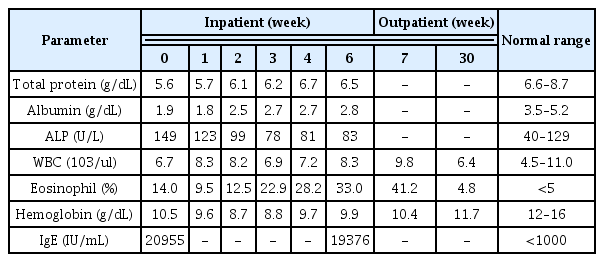References
1. De Onis M, Monteiro C, Akré J, Glugston G. The worldwide magnitude of protein-energy malnutrition: an overview from the WHO Global Database on Child Growth. Bull World Health Organ 1993;71(6):703.
2. Lochs H, Allison SP, Meier R, et al. Introductory to the ESPEN guidelines on enteral nutrition: terminology, definitions and general topics. Clin Nutr 2006;25(2):180–186.
3. Cereda E, Pedrolli C, Klersy C, et al. Nutritional status in older persons according to healthcare setting: a systematic review and meta-analysis of prevalence data using MNA®. Clin Nutr 2016;35(6):1282–1290.
5. Puntis JWL. Malnutrition in Developed Countries. Ann Nestlé (English ed) 2009;67(2):65–72.
6. Pennington CR. Disease-associated malnutrition in the year 2000. Postgrad Med J 1998;74(868):65–71.
7. Béhar M, Viteri F, Bressani R, et al. Principles of treatment and prevention of severe protein malnutrition in childeren (kwashiorkor). Ann N Y Acad Sci 1958;69(5):954–968.
8. Longo DL, Fauci AS, Kasper DL, et al. Harrison’s Principles of Internal Medicine 2012. Mcgraw-hill. New York: 2012.
9. Boirie Y, Morio B, Caumon E, et al. Nutrition and protein energy homeostasis in elderly. Mech Ageing Dev 2014;136:76–84.
10. Omran ML, Morley JE. Assessment of protein energy malnutrition in older persons, part I: History, examination, body composition, and screening tools. Nutrition 2000;16(1):50–63.
11. Norman K, Pichard C, Lochs H, et al. Prognostic impact of disease-related malnutrition. Clin Nutr 2008;27(1):5–15.
12. Kuniaki H, Akihiko T, Tetsuya H, et al. Improvement in Frailty in a Patient With Severe Chronic Obstructive Pulmonary Disease After Ninjin’yoeito Therapy: A Case Report. Front Nutr 2018;5(September):3–6.
13. Ogawa-Ochiai K, Kawasaki K. Panax ginseng for frailty-related disorders: a review. Front Nutr 2019;5:140.
14. Sasatani Y, Okauchi S, Ohara G, et al. Long-term maintenance of nutritional status with ninjinyoueito in terminal patients with chronic respiratory disease: Two case reports. Biomed Reports 2020;12(3):121–124.
15. May T, Klatt KC, Smith J, et al. Choline supplementation prevents a hallmark disturbance of Kwashiorkor in weanling mice fed a maize vegetable diet: hepatic steatosis of undernutrition. Nutrients 2018;10(5):653.
16. Fechner A, Böhme CC, Gromer S, et al. Antioxidant Status and Nitric Oxide in the Malnutrition Syndrome Kwashiorkor. Pediatr Res 2001;49(2):237–243.
17. van Zutphen T, Ciapaite J, Bloks VW, et al. Malnutrition-associated liver steatosis and ATP depletion is caused by peroxisomal and mitochondrial dysfunction. J Hepatol 2016;65(6):1198–1208.
18. Saunders J, Smith T. Malnutrition: causes and consequences. Clin Med (Northfield Il) 2010;10(6):624.
19. Frenk S. Metabolic adaptation in protein-energy malnutrition. J Am Coll Nutr 1986;5(4):371–381.
20. Coulthard GM. Oedema in kwashiorkor is caused by hypoalbuminaemia. Paediatr Int Child Health 2015;35(2):83–89.
21. Okada R, Nakachi S, Inokuma S. The severity of peripheral blood eosinophilia indicates an eosinophilia-associated disease corresponding to its level. Allergol Int 2016;65(1):112–114.
22. Walker C, Kägi MK, Ingold P, et al. Atopic dermatitis: correlation of peripheral blood T cell activation, eosinophilia and serum factors with clinical severity. Clin Exp Allergy 1993;23(2):145–153.
23. Trzeciak M, Gleń J, Bandurski T, et al. Relationship between serum levels of interleukin-18, IgE and disease severity in patients with atopic dermatitis. Clin Exp Dermatol 2011;36(7):728–732.
24. Lai F, Zhou G, Mai S, et al. Sini Decoction Improves Adrenal Function and the Short-Term Outcome of Septic Rats through Downregulation of Adrenal Toll-Like Receptor 4 Expression. Evid Based Complement Alternat Med 2018;20185186158.
25. Uto NS, Amitani H, Atobe Y, et al. Herbal Medicine Ninjin’yoeito in the Treatment of Sarcopenia and Frailty. Front Nutr 2018;5:126.
26. Hong SS, Lee J, Lee JS, et al. The traditional drug Gongjin-Dan ameliorates chronic fatigue in a forced-stress mouse exercise model. J Ethnopharmacol 2015;168:268–278.



